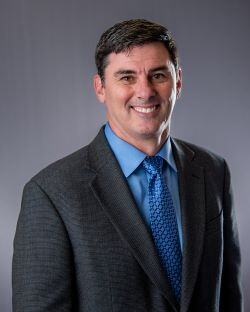The Road Ahead
Planning green facilities for a sustainable future

Sustainable, carbon neutral and net zero are officially more than buzzwords. Companies that have decided to pursue a green future for their businesses and stakeholders are embracing an environmental and lifestyle awareness intended to significantly improve detrimental corporate behaviors. This concept represents an array of goals for manufacturers that want to produce effective, innovative, energy-efficient facilities. Two elements are essential for achieving these goals: a financial commitment to building and operating a facility capable of integrating evolving green technologies and recognizing the possible need to shift to keep pace with evolving technology.
Before committing to a green future, it is imperative for facility managers to assess several areas, including budget, long-term goal setting and appropriate facility testing. Whether the project is a renovation, new construction, a proposal for new equipment or a design concept based on sustainability, early and frequent involvement from expert consultants will go a long way to ensuring a cost-effective, sustainable transition.
The cumulative carbon footprint
Many companies have either instituted green strategies or plan to invest significant resources in future environmental, social and governance (ESG) initiatives for more sustainable energy consumption. According to the Journal of Accountability, 98 percent of companies worldwide have reported some level of detail on sustainable practices as of 2022. This represents a significant increase over the 91 percent that reported on sustainability in 2019, the inaugural year covered by the report. At the same time, global demand for energy continues to rise, and consumption will keep increasing unless substantial gains are made in efficient energy usage and strategies that leverage renewable energy sources such as wind and solar power.
According to the International Energy Agency (IEA), global electricity demand is expected to rise rapidly over the next three years, growing by an average of 3.4 percent annually through 2026. Trends tracked by the International Renewable Energy Agency (IRENA) also show “that 2023 set a new record in renewables deployed in the power sector by reaching a total capacity of 3,870 gigawatts (GW) globally. Renewables accounted for 86 percent of capacity additions; however, this growth is unevenly distributed across the world, indicating a trend far from the tripling renewable power target by 2030.” From the FM perspective, the goal is that any efforts and resources put toward sustainability are made comprehensively to ensure a return on investment that benefits the environment and the organization.
Companies continue to be incentivized to engage in long-term goals that protect the environment and promote sustainability. In March 2024, the U.S. Department of Energy (DOE) issued a $425 million funding opportunity as part of President Joe Biden’s Investing in America program to support small- and medium-sized manufacturers in reducing industrial emissions and advancing clean-energy manufacturing. Intended to reduce industrial emissions and advance clean energy manufacturing deemed essential to the U.S. energy supply chain, the program is expected to strengthen energy security, create lucrative jobs, cut climate pollution and assist in maintaining other economic benefits. Notable environmental-based regulations include the Inflation Reduction Act of 2022, legislation intended to accelerate the transition to a financially smart, energy-efficient and sustainable system, and the Clean Air Act, a broad-scope law that regulates all sources of air emissions.
How to go green
There is no universal pathway to finding the best solutions for energy sustainability. Typically, a commitment to being a steward of the environment will likely equate to spending a significant amount of financial resources. When there is a clear understanding of the company’s goals and an expectation of what it will cost to meet those goals, the economic payback can be better realized through an array of available solution opportunities within a budget.
Evidence shows that an eco-friendlier company culture produces better performance when transitioning to green protocols and improved business benchmarks. A joint study overall by McKinsey and NielsonIQ reports that 78 percent of consumers prioritize brands that promote sustainability. Additionally, 89 percent of organizations with high ESG ratings outperform their market competitors. In an era where professionals are more likely to target employers that provide more meaning in their work, an eco-friendly culture and setting could attract more talent. According to Cooleaf, an employee engagement technology firm, a thriving green culture will communicate the company’s desire to be a steward of sustainability and promote any policies intended to help meet goals based on, for example, reaching carbon neutrality or net zero energy by a planned date. When sustainability goals are in the DNA of the culture, decision-making processes will be more meaningful and effective.
Putting green to the test
Another important factor is optimizing test facilities to embrace green technologies and methodologies. By nature, the testing environment will utilize significant amounts of energy as energy is required to test products. While testing, companies often use the tried-and-true conservative method of burning that energy off using items like load banks. Newer systems, however, can capture that energy and use it to heat or cool the building or produce electricity for building usage. In some instances, the amount of electricity generated is so immense that it cannot be consumed, resulting in the need to store the energy or push it back to the utility. This can create additional benefits and complications for the project.
One benefit of using newer systems is taking advantage of the advancements in energy storage systems. Smart grid technologies with renewables such as solar and wind power to produce the power needed to balance the production of power as compared to the power demand of the facility. Experienced consultants can provide troubleshooting for facilities and companies to meet today’s green energy requirements.
Case study review & successful capital projects
Case studies have proven that outside, objective expertise and detailed-oriented, extensive planning are indispensable when striving for maximum energy recovery. Through funding from the DOE, one of the world’s largest industrial gas companies has tested different technologies to determine the most effective process for reducing aerosol particle concentrations in the flue gas of coal-fired power plants. For the test, an electrostatic precipitator was utilized to fabricate a high-velocity spray tower and a media filter that could be tested against the precipitator. The project required piping and a control panel. Reducing the amount of solvent lost will make carbon capture technology less expensive, encouraging its adoption on a wider scale. Such technology is reversing the trend of climate change.
An industrial LEED®-certified facility located in Wisconsin, USA, underwent a newly constructed 75,000-square-foot potato chip manufacturing plant designed and built to operate under a 100 percent electrical energy requirement for green power. Eighteen wind turbines were installed on the facility’s roof, producing 28,000 kWh annually to help reach this status. The facility also successfully underwent comprehensive manufacturing and Factory Acceptance Testing (FAT), as well as Site Acceptance Testing (SAT).
A major university contracted with a partner to assist with the preconstruction and construction phases for a 3,000-square-foot addition to its international research center. The addition’s infrastructure included systems for chilled and hot water, compressed air and multiple fuels delivery, and upgraded electrical power and natural gas service. The center’s expansion will increase the university’s research capabilities and investigations of efficient and clean engine concepts, alternative fuels, and hybrid electric and electric vehicle (EV) powertrain systems.
Recruiting green consultation & strategic planning
It is critical to begin the recruitment process of any consulting organization that can guide the implementation of automation equipment, control systems and construction management services for going green as early as possible during the planning stages. The earlier this type of advice can be engaged, the more likely it will be to identify a partner organization that can assist in achieving specific goals. The sooner solutions are cultivated, the more efficient it will be to reach and maintain stability. Developing a partnering relationship can also improve expectations and establish a high-level direction setting.
Sustainability has progressed well beyond merely participating in a collective global effort. Today, it is about facilitating the most appropriate and efficient use of green equipment to significantly quicken the timeline toward improved outcomes. The consequences of not seeking guided expertise can range from delaying projects to dramatically altering the sustainability timeline if equipment requires repair or replacement. As new technologies are developed, the ability to rely on an educated and experienced partner may mean the difference in contributing to the improvement of global energy conservation.

Chris Arnold, managing director, ACS Michigan spearheads business development and project execution for ACS initiatives in the Michigan area. Collaborating closely with engine and vehicle OEMs, tier suppliers and independent test labs, he specializes in delivering tailored testing solutions. These solutions span from unique test equipment pieces to the establishment of greenfield technical centers. With an extensive 20-plus-year career dedicated to engine and vehicle test cells, Arnold possesses an in-depth understanding of the challenges faced by lab operators. His expertise lies in defining and implementing creative solutions that effectively address customer concerns.

Matt Jorgensen, director, facility engineering and site management, ACS has an extensive background in the testing and production industry. He brings valuable experience in white paper conception, detailed engineering and project management across a diverse range of projects, including individual small-scale test equipment and the establishment of entire technical centers. His expertise spans a wide array of products, encompassing components, engines, vehicles and batteries. While still actively involved in project management, Jorgensen directs his focus toward aiding clients in planning and defining new projects. In collaboration with both new and existing clients, he plays a key role in scoping, concepting and estimating potential projects, ensuring a strategic setup for success once awarded.
Read more on Leadership & Strategy , Project Management and Sustainability
Explore All FMJ Topics









